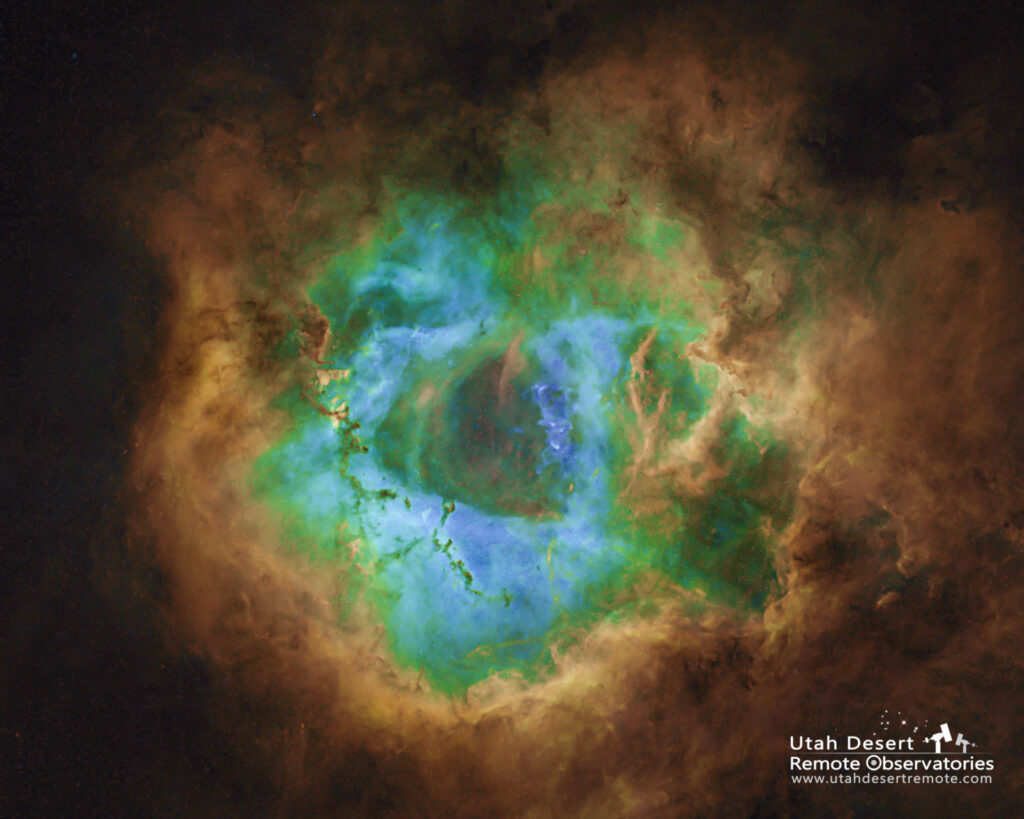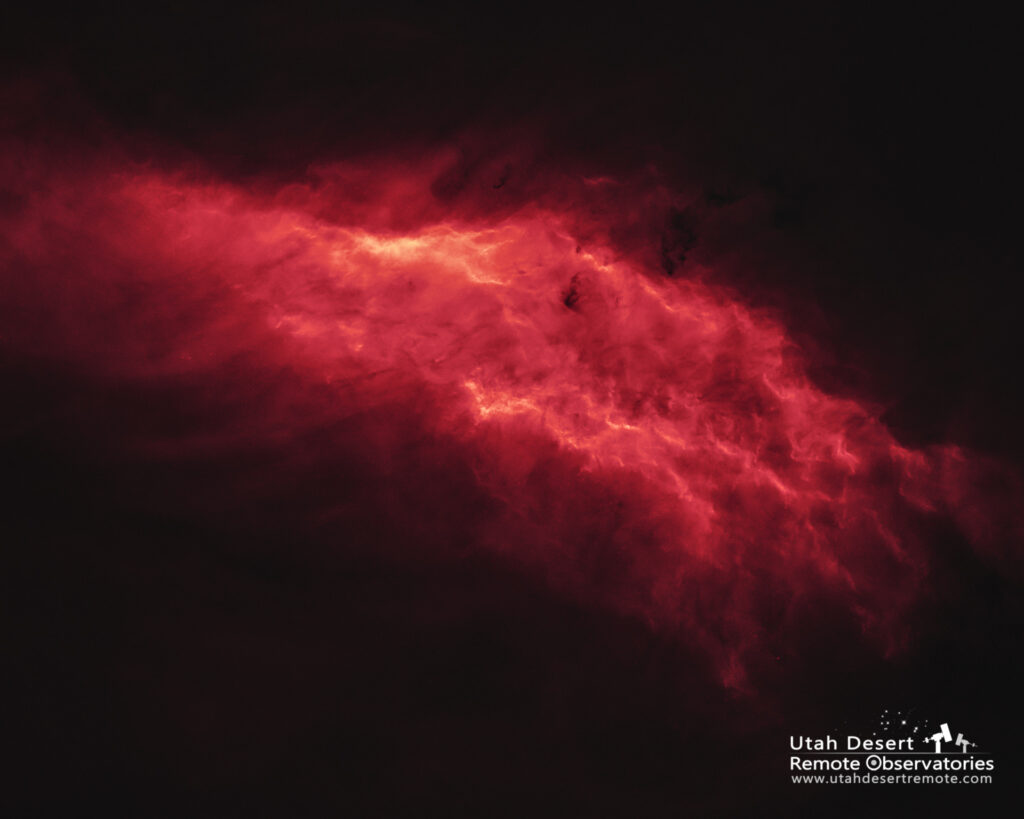

Hydrogen is the most common element in the universe. It was created in the Big Bang along with a little helium and lithium. Over time stars have converted some of the hydrogen into heavier elements through fusion reactions, and when the star eventually burns through its fuel it explodes and scatters the elements to the surroundings – where it may collapse again to form a new star and planets. We are truly made of star dust.
Nearly all emission nebulae contain hydrogen, and many of them are mostly hydrogen. Narrow band filters allow us to selectively expose just the specific wavelength color corresponding to the various elements. We nearly always start with a hydrogen filter. Oxygen is the next most common followed by sulfur, so a typical session combines hydrogen, oxygen and sulfur exposures.
The fun comes later in post processing when we get to decide how to represent the colors. Hydrogen and sulfur and very similar red colors while oxygen is blue-green. The Hubble palette is frequently used because it creates a lot of color contrast between sulfur and hydrogen and allows us to very clearly visualize what elements are where in a nebula. It also looks really cool!
